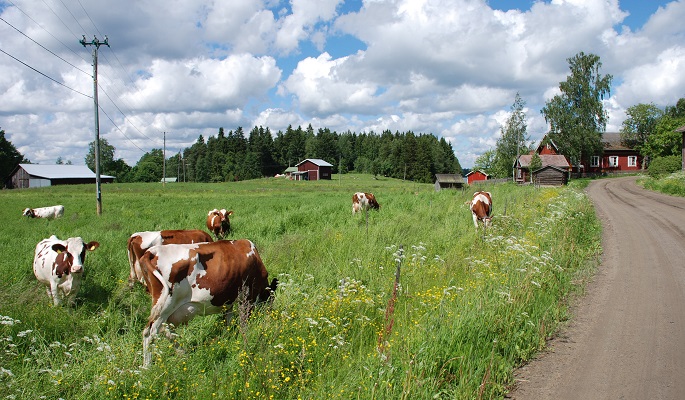Production of pork decreases, beef, poultry increases
Published : 03 Mar 2019, 18:17
Updated : 03 Mar 2019, 18:18
More than over 393 million kilograms of pork was produced in 2018, which was one per cent less than in 2017. Production volumes of beef and poultry increased, while the production volume of pork decreased, the Natural Resources Institute Finland (Luke).
Milk production amounted to 2,328 million litres, which is slightly less than in the previous year. Production of eggs increased from the previous year.
Almost seven per cent less pork than during the previous year was produced. The production volume was a little less than 169 million kilograms. The production volume of pork has not been this low since 1995. The average weight of pigs increased to 91 kgs.
There were some 1,000 pig farms last year. The number of farms decreased by approximately seven per cent over the course of the year.
Beef production amounted to a little less than 87 million kilograms, which is one per cent more than in 2017. The slaughter volume of heifers increased, while the slaughter volume of bulls decreased. The average weight of both heifers and bulls increased from the previous year.
The increase in the production volume of poultry continued last year, increasing to a little over 135 million kilograms. The production volume of chicken increased by five per cent and the production volume of turkey by a little less than two per cent.
Organic meat production amounted to just under four million kilograms in 2018. The production volume includes organic slaughter of cows, pigs and sheep. A little over 70 per cent of the organic meat volume is beef. The share of organic meat was approximately one per cent of all the meat produced, but more than one-quarter of all the mutton was organic.
The production volume of milk somewhat dropped from 2017 to 2,328 million litres. Dairies received approximately 2,285 litres of milk. This was the third year in a row when the production volume decreased.
Meanwhile, the production volume of organic milk increased to 69 million litres. Organic milk amounted to a little less than three per cent of the total volume of dairy milk production, says Sanna Vuorisalo, Senior Statistician at Luke.
The decrease in the number of milk producers picked up speed last year. At the end of the year, there were 6,250 milk producers in Finland, which is eight per cent fewer than at the end of the previous year.
At the end of last year, there were some 264,000 dairy cows, which was a little less than three per cent fewer than in the previous year. The average milk yield per cow slightly increased, and a cow produced on average 8,650 litres.
Five per cent less milk was produced last year when compared to the volume of milk at the turn of the millennium. The number of cows has decreased by a little over one-quarter. Almost three-thirds of milk producers ceased their production activities during this period of time. Meanwhile, the average yield per cow has increased by one-quarter and the average milk farm size has increased from 15 to 39 cows.
The egg production volume increased from the previous year by two per cent to a little less than 75 million kilograms. This volume includes eggs processed by packing plants. More eggs than last year have not been produced since the year 1990, Vuorisalo saidcontinues.
Most of the eggs (58%) were produced in enriched cages. 33 per cent of the eggs were produced at barn henhouses, two per cent at free-range henhouses and seven per cent at organic henhouses.
The volume of eggs produced in enriched cages decreased by one per cent from the previous year. The volume of eggs produced at barn and free-range henhouses increased by four per cent, and the amount produced at organic henhouses increased by twenty per cent.


